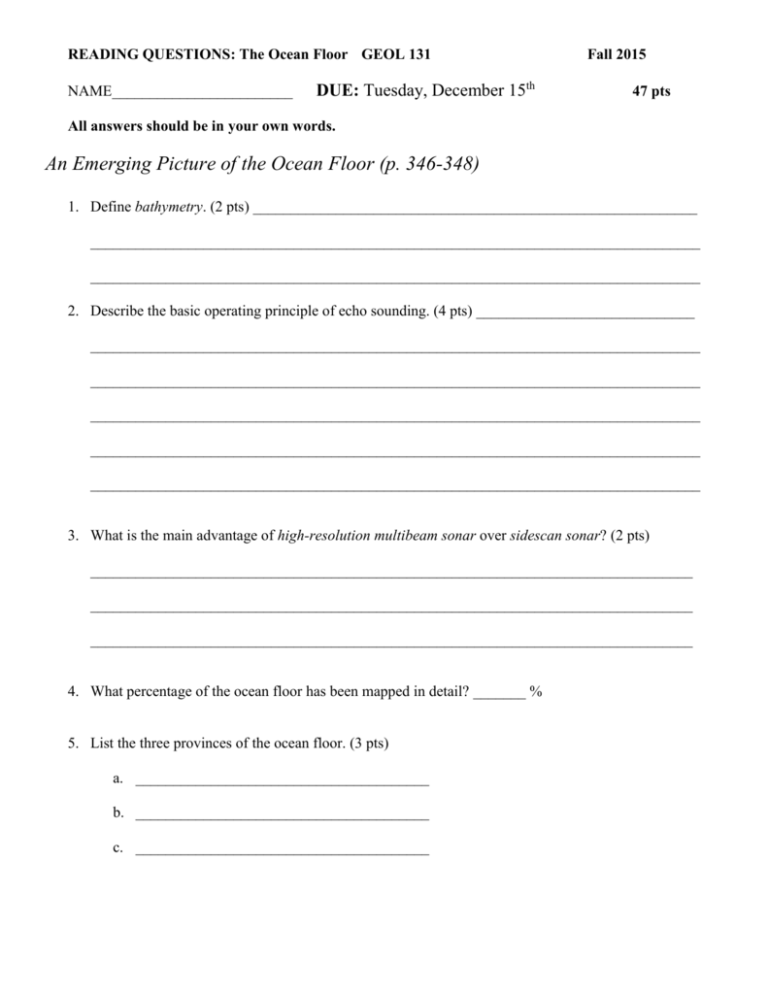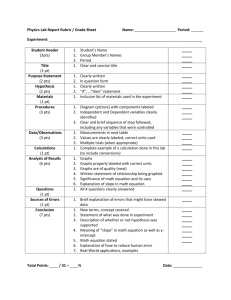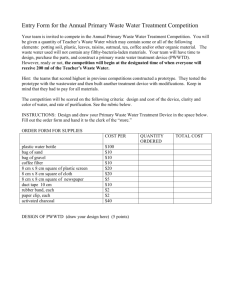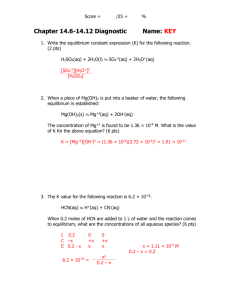Minerals - WordPress.com
advertisement

READING QUESTIONS: The Ocean Floor GEOL 131 NAME________________________ DUE: Tuesday, December 15th Fall 2015 47 pts All answers should be in your own words. An Emerging Picture of the Ocean Floor (p. 346-348) 1. Define bathymetry. (2 pts) ___________________________________________________________ _________________________________________________________________________________ _________________________________________________________________________________ 2. Describe the basic operating principle of echo sounding. (4 pts) _____________________________ _________________________________________________________________________________ _________________________________________________________________________________ _________________________________________________________________________________ _________________________________________________________________________________ _________________________________________________________________________________ 3. What is the main advantage of high-resolution multibeam sonar over sidescan sonar? (2 pts) ________________________________________________________________________________ ________________________________________________________________________________ ________________________________________________________________________________ 4. What percentage of the ocean floor has been mapped in detail? _______ % 5. List the three provinces of the ocean floor. (3 pts) a. _______________________________________ b. _______________________________________ c. _______________________________________ Continental Margins (p. 348-350) 6. Label the three parts of a passive continental margin on the figure below. (3 pts) 7. Why are passive margins called passive? ________________________________________________ _________________________________________________________________________________ 8. Passive margins develop when (2 pts) __________________________________________________ ________________________________________________________________________________ 9. The continental rise consists of (2 pts) __________________________________________________ ________________________________________________________________________________ ________________________________________________________________________________ 10. EXTRA CREDIT: What is the average slope angle of continental shelves? ____________ degree 11. What plate tectonic setting do active continental margins develop in? a. b. c. d. e. Subduction zone Divergent boundary Rift zone Continental collision zone None of the above 12. How does an accretionary wedge form? (2 pts) __________________________________________ ________________________________________________________________________________ ________________________________________________________________________________ 13. A subducting plate with a shallow subduction angle is more likely to exhibit subduction erosion than one with a steep angle. TRUE or FALSE Features of Deep-Ocean Basins (p. 350-353) 14. Fill in the blanks: Deep ocean trenches are sites of plate _______________________ where slabs of _______________________ lithosphere _____________________ and plunge into the mantle. (3 pts) 15. Why are abyssal plains more extensive on the Atlantic Ocean floor than in the Pacific? (2 pts) __________________________________________________________________________________ __________________________________________________________________________________ __________________________________________________________________________________ 16. Why are abyssal plains very flat? _______________________________________________________ 17. How do guyots form? (3 pts) __________________________________________________________ __________________________________________________________________________________ __________________________________________________________________________________ __________________________________________________________________________________ Anatomy of the Oceanic Ridge (p. 353-354) 18. What is the total length of the world’s oceanic ridge system? _________________ miles 19. What is the typical elevation of the crest of an oceanic ridge above the surrounding deep-ocean basin? _____________ meters 20. Fill in the blanks: Oceanic ridges form where upwelling from the ____________ generates new ____________ ______________. Oceanic ridges consist of layers and piles of newly formed _________________ rocks that are buoyantly ___________________ by the _____ mantle rocks from which they formed. (3 pts) Oceanic Ridges and Seafloor Spreading (p. 354-356) 21. Oceanic ridges with slow spreading rates typically have (circle three answers): (3 pts) a. No rift valley b. A well-developed rift valley c. A smooth topography d. A rugged topography e. Well-developed magma chambers f. Poorly developed magma chambers 22. What is the primary reason why oceanic ridges are elevated? (2 pts) _____________________________ ____________________________________________________________________________________ ____________________________________________________________________________________ The Nature of Oceanic Crust (p. 356-358) 23. Examine figure 18 on page 357, then label the four layers of oceanic crust in the diagram below. (2 pts) 24. Explain how a sheeted dike complex forms (2 pts). __________________________________________ ______________________________________________________________________________________ ______________________________________________________________________________________ ______________________________________________________________________________________ ______________________________________________________________________________________







